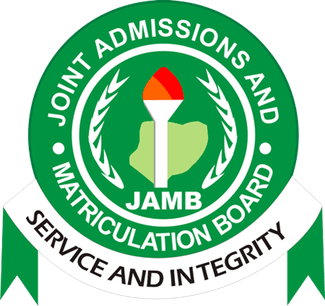
The Unified Tertiary Matriculation Examination (UTME) Agriculture syllabus seeks to establish a disciplined framework fit for the national secondary school curriculum, so leading candidates to concentrate on subjects and enable successful preparation.
The UTME curriculum is a thorough reference for candidates, describing all of the exam’s main topics and subtopics. By removing guesswork and directing students’ energy and attention to the most relevant information, they may prepare more effectively and efficiently.
The Agriculture syllabus is divided into five sections:
- General Agriculture
- Agronomy
- Animal Production
- Agricultural Economics and Extension
- Agricultural Technology
JAMB Agriculture Syllabus
SECTION A: General Agriculture
1. Meaning and Scope of Agriculture
- Definition of Agriculture
- Branches of Agriculture
- Types of Agriculture i.e subsistence and Commercial
2. Importance of Agriculture
- Provision of raw materials for agroallied industries
- Provision of employment
- Development of rural areas, etc
3. Agricultural Ecology
- Ecological zones of West Africa
- Agricultural products of each ecological zone
- Environmental factors and their effects on crop and livestock production
4. Genetics
- First and second laws of Mendel
- Cell division
- Terminologies e.g. locus, alleles,
- Genotype, Dominance
5. Farm Inputs
e.g. planting materials, agrochemicals, etc
See Also: JAMB Syllabus For all Subjects
6. History of Agricultural Development in West Africa
- Agricultural systems, e.g. shifting cultivation, bush fallowing, etc.
- Problems of Agricultural development, e.g. land tenure systems, inadequate infrastructures, finance for agriculture, pollution, etc.
- Establishment of national research institutes, e.g. NCRI, IAR, IAR&T, CRIN, NIFOR, FRIN, RRI, NRCRI, NIHORT, LCRI, etc. and international research institutes e.g. IITA, ILRI, ICRISAT, WARDA, etc., leading to increased application of science to the development of agriculture.
- Agricultural Development Projects (ADPs) e.g. RTEP, FADAMA etc.
- National agricultural programmes such as OFN, NAFPP, NALDA, Green Revolution, NCRPs, NARP, Project Coordinating Unit (PCU) etc.
7. Roles of Government and NGOs in
- a. Development of fiscal policies favourable to agricultural production e.g. import duties, ban on importation, e.t.c.
- Agricultural laws and reforms e.g Land Use Act.
- Government programmes aimed at agricultural development
- Provision of infrastructures e.g transport systems, communication systems, e.t.c.
- Contribution of NGOs to agricultural development
SECTION B: Agronomy
1. Rocks and Soil formation
- Factors affecting rock weathering and soil formation
- Physical properties of soil
- Soil profile
- Soil texture and structure
3. Chemical properties of soil
- Soil acidity and alkalinity
- Chemical components of soil e.g. silicate
2. Soil Water and Soil Conservation
- Soil water: its importance, sources, movement, management and conservation.
- Soil conservation: meaning and importance, causes, effects, prevention and control of leaching, erosion, continuous cropping, burning and oxidation of organic matter.
- Irrigation and drainage methods.
3. Soil Fertility
- Macro and micro-nutrients and their roles in plant nutrition: carbon, water and nitrogen cycles
- The living population of the soil (flora and fauna), and their roles in soil fertility
- Maintenance of soil fertility: Methods of maintaining soil fertility e.g. use of cover crops, application of organic manures, etc.
- Nutrient deficiency symptoms e.g. chlorosis, sickle leaves, stunting, apical necrosis etc.
4. Land Preparation and Soil Tillage
- Principles and practices of land preparation and soil tillage
- Factors affecting choice of tillage methods: Zero tillage, minimum tillage, etc.
5. Plant Forms and Functions
- Parts of monocot and dicot crop plants and their functions
- The anatomy and morphology of the storage organs of common crop plants
6. Growth, Development and Reproduction
- Gametogenesis
- Pollination
- Fertilization
- Embryo formation and development
7. Plant Propagation Methods
- Sexual: the use of seeds, seed viability, viability test, seed rate and seed germination
- Asexual (vegetative propagation) e.g. cutting, budding, grafting, layering, e.t.c.
- Nursery and nursery management
8. Cropping Systems, Planting Patterns and Plant Densities
- Cropping systems: Monocropping, mixed-, multiple-, inter-, relay-, strip- and rotational cropping
- Planting patterns: Broadcasting, row spacing and drilling
- Plant densities: single, double and multiple stands
9. Crop Husbandry
Common and scientific names, gross morphology, anatomy of storage organs, methods of propagation, husbandry practices, harvesting, processing and storage, common diseases and pests, economic importance of the following groups of crops.

Be the first to comment